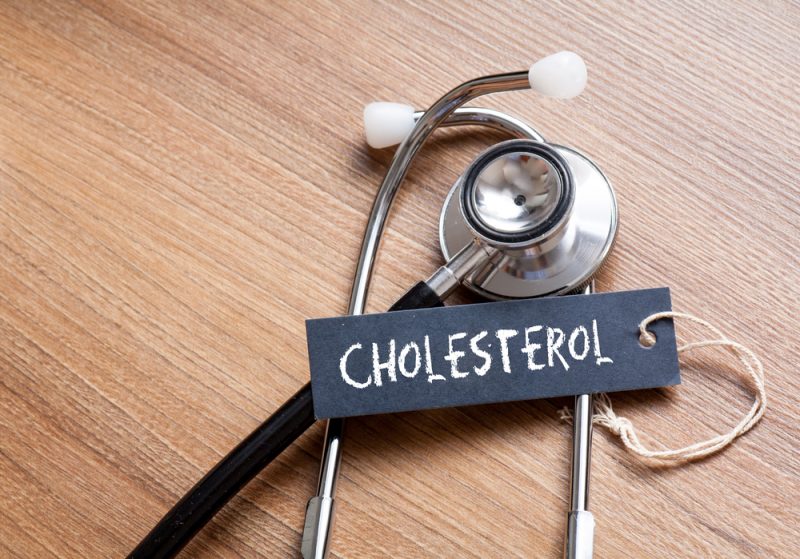Cholesterol Metabolism Is Potential Therapeutic Target in DMD

An analysis of microRNA molecules isolated from the blood of people with Duchenne muscular dystrophy (DMD) found alterations related to cholesterol metabolism, a study demonstrated.
These findings suggest that the cholesterol metabolic pathway may be a potential therapeutic target for this most common type of muscular dystrophy, the scientists said.
“The present study provides new understanding of the metabolic [deviations] in DMD and thus opens up new perspectives for the treatment of DMD,” the researchers wrote.
The study, “Cholesterol metabolism is a potential therapeutic target in Duchenne muscular dystrophy,” was published in the Journal of Cachexia, Sarcopenia and Muscle.
Mutations in the DMD gene lead to a lack of functional dystrophin protein, which provides structural support for muscle fibers. In the absence of dystrophin, muscles become weaker, leading to a loss of motor function as well as problems with the heart and lungs.
Recent studies suggest that another consequence of DMD is progressive metabolic changes that also affect muscle. One method to further investigate disease processes is to profile microRNAs or miRNAs — small segments of RNA that play an essential role in protein production.
Although several miRNA profiling studies in DMD have been conducted so far, most have focussed on animal models, evaluated small groups of patients, or used technologies to detect miRNAs with low sensitivity.
In this Genethon-sponsored study (NCT01380964), a team of researchers based at the Paris-Saclay University, in France, and their collaborators overcame these limitations by profiling miRNAs circulation in the bloodstream of a larger group of individuals with Duchenne MD. The participants ranged in age from 4 to 20, and were either untreated or had been given corticosteroids, a standard treatment that preserves muscle tissue by reducing inflammation.
Blood samples were collected from 100 DMD patients and 123 age-matched healthy people (controls) from 10 medical centers in Europe, with participants divided into three age groups: 4–8 years old, 8–12, and 12–20.
Following RNA extraction and validation, 81 RNA samples were selected, which came from nine groups of nine participants. The groups consisted of patients, either untreated or those receiving glucocorticoids, and healthy controls, in all three age categories.
Participants in the youngest age group were able to walk, while three of those in the mid-range group and all but two in the older group could not walk.
All 81 RNA samples were sequenced and matched to the human genome to find miRNAs specifically. An analysis was then conducted to measure which miRNAs were at higher levels (upregulated) or at lower levels (downregulated) compared with controls in each subgroup.
The analysis was able to find differences in miRNA regulation between patients and controls in the youngest (4–8) and midrange groups (8–12), but not the older group (12–20). “This effect is age-dependent as it is no longer observed beyond the age of 12,” the team wrote.
In contrast, overall, the analysis failed to separate miRNA differences between treated and untreated DMD patients. Notably, no significant correlation was found in any single circulating miRNA levels to patients’ body mass index, a measure of body fat.
The most extensive set of significant miRNA changes were found by comparing the combined treated and untreated 4- to 12-year-old patients with controls, which included 65 upregulated and 25 downregulated miRNAs.
Among these were miRNAs related to dystrophin, heart-enriched cardio-miRNA, and a large number of miRNAs belonging to the DLK1-DIO3 cluster, which have been shown to be related to muscle function and DMD.
Newly identified altered miRNAs were part of the Let-7 and miR-320 families, known to modulate diverse functions in heart and skeletal muscles, which are the muscles attached to tendons and bones.
Additionally, a comparison of miRNAs before and after glucocorticoid treatment in the 4–12 age group found 11 miRNAs different in untreated patients compared with controls. Nine of these shifted toward normal levels by treatment.
To identify genes associated with altered miRNAs, a bioinformatics computer analysis was applied. Here, the analysis found the metabolism of lipids or fat-like molecules may be impacted by DMD. In particular, two genes were identified, SREBP-1 and SREBP-2, which are important for cholesterol and fatty acid metabolism.
To confirm these results, the team investigated the skeletal muscles of the mdx mouse model of DMD. The findings demonstrated the upregulation of both SREBP-1 and SREBP-2 proteins in dystrophic muscles of these mice.
Based on these data, the effect of simvastatin — an approved medication that blocks cholesterol production — was tested in mdx mice. While there was a more than twofold increase in cholesterol production in mdx mouse muscles compared with healthy controls, treatment with simvastatin partially normalized cholesterol production. Further, simvastatin treatment normalized the expression of SREBP-1 and SREBP-2.
Finally, in muscle biopsies obtained from two DMD patients, the team found a nearly twofold increase in free cholesterol compared with controls.
“In summary, from the [blood] samples of a large DMD [group], the present study identified that perturbation [deviation] of lipid metabolism, and in particular of cholesterol homeostasis, plays an important role in the pathophysiology [disease development] of DMD,” the researchers wrote.
“Thus, cholesterol metabolism is a potential therapeutic target in DMD,” they added.






